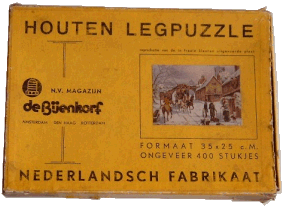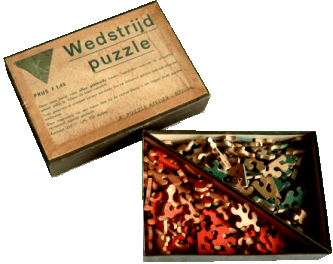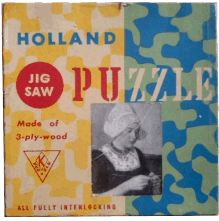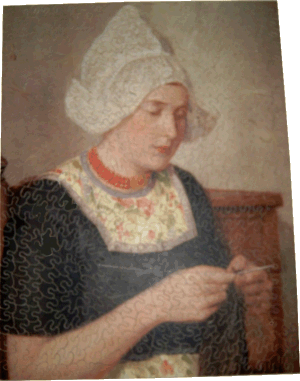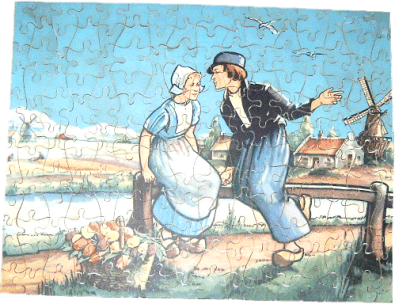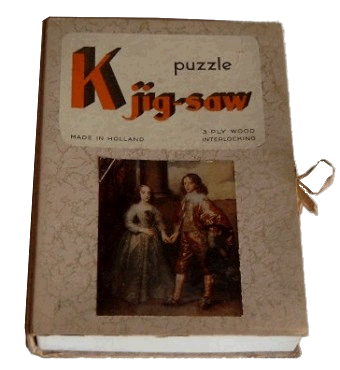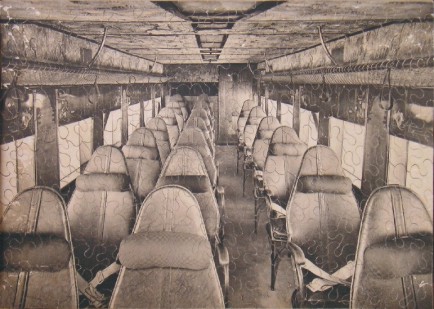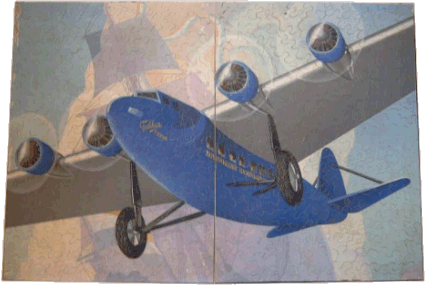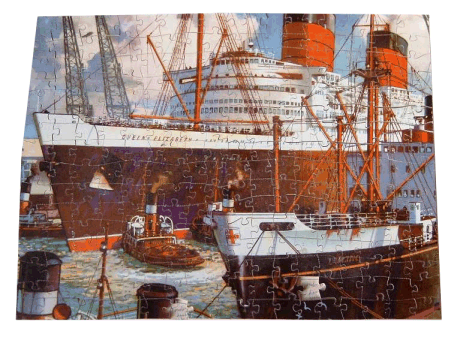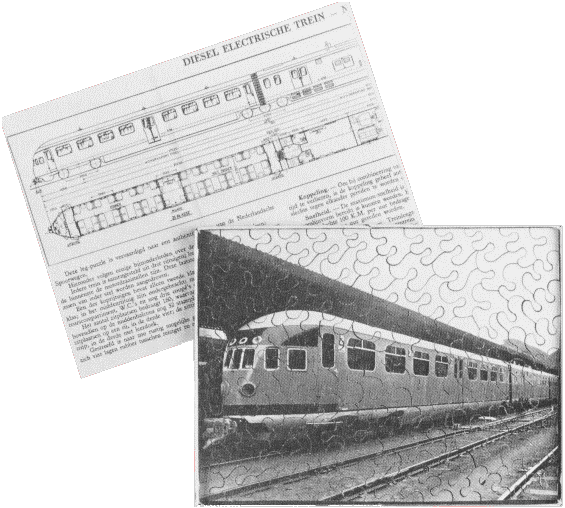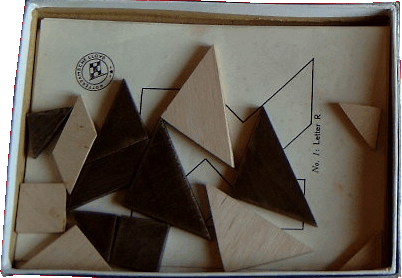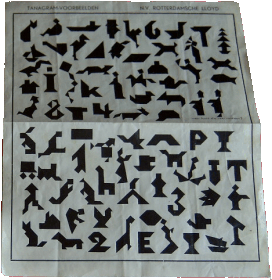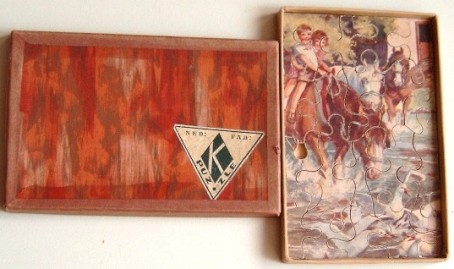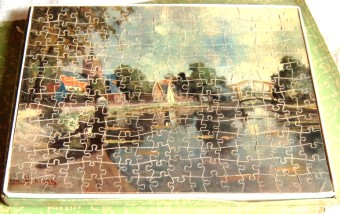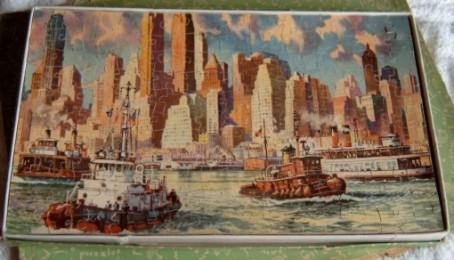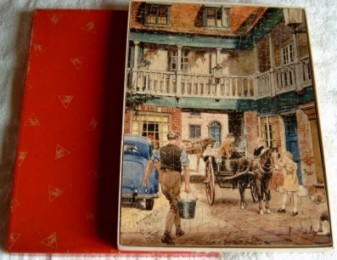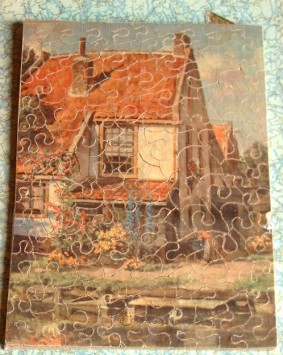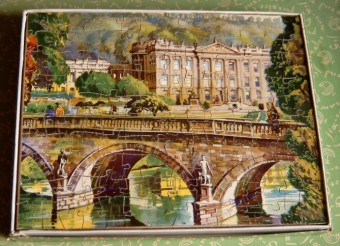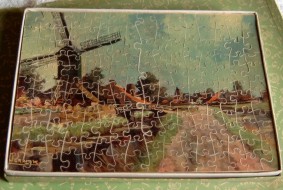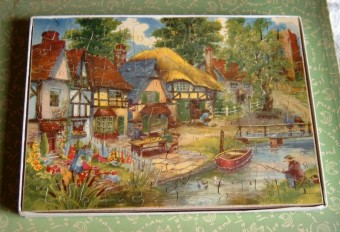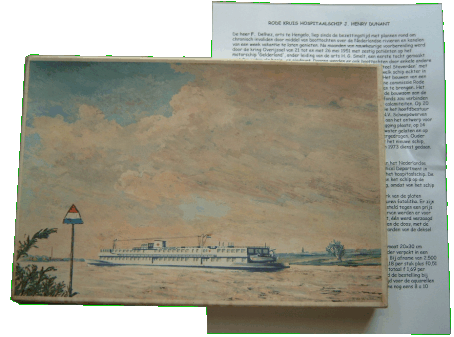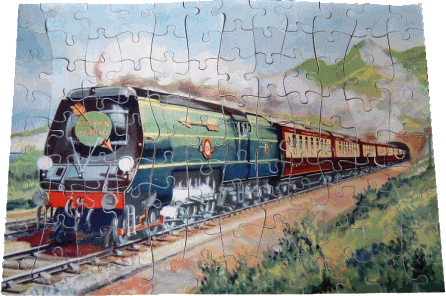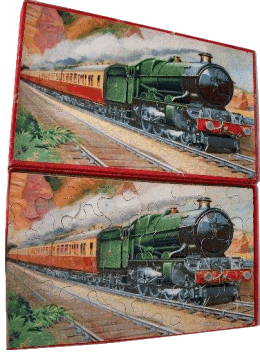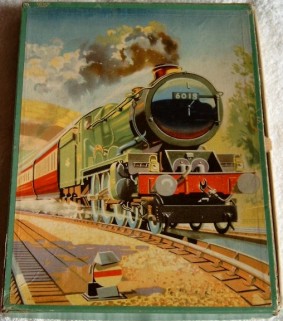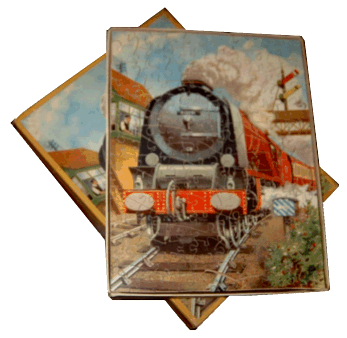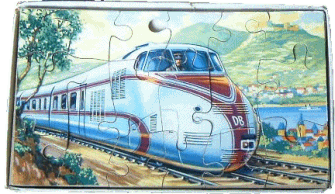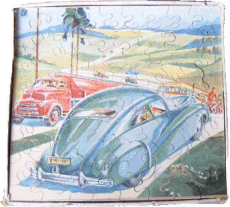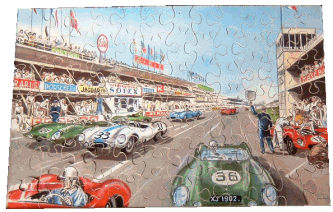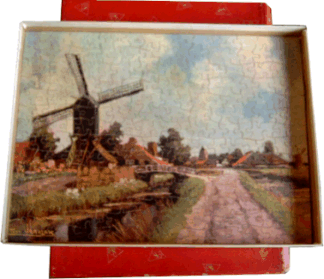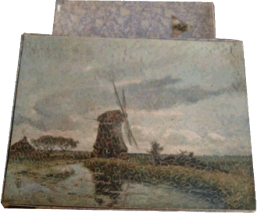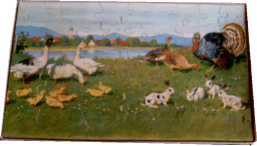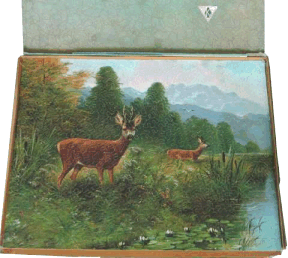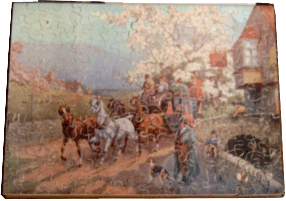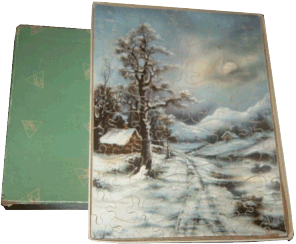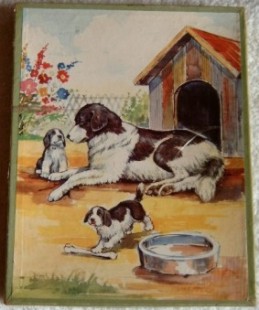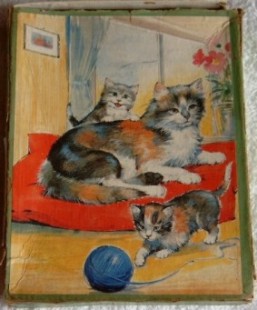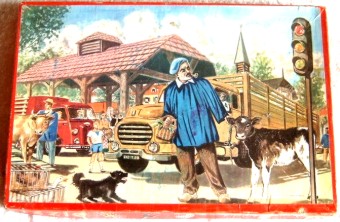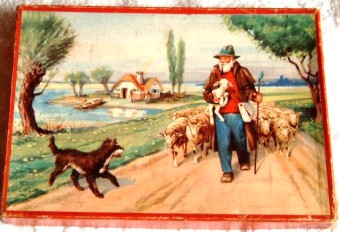|
 unexpected surprise
unexpected surprise
Unique "Bijenkorf" puzzle discovered
On December 6th 2009 Victor received an e-mail from
Geert Bekkering
with 2 photo's attached. Geert (from the Dutch "Puzzle Guild")
obtained this puzzle somewhere and wondered wether this was
indeed a "Klaus-puzzle" or not, because the style of sawing
as well as the artwork was not completely "Kolibri-style".
Our sister Marianne was clever enough to forward this question
to our uncle Hans, my father's last remaining (youngest) brother
(he died in 2017 on April 26th) and very much in the know
where Kolibri and K-Puzzle materials are concerned.
What follows here is Hans Klaus' reply:
Surely this is a Klaus-puzzle. And especially one from the early
second world-war period. The lay-out of the box is already proof
of this. Printing of the label was done by Van Wijland from Laren
(North Holland). This is an English scenery from the old
Harrison-collection, of which ample supply was still in stock.
The "massive" wooden material is also in accordance to early wartime
standards, since plywood was no longer available. My father
(your grandfather) searched for an alternative and tried to find
this in what we call veneer. My father was very familiar with this
kind of material, from his work as representative of Halbertsma -
Grouw (Friesland), dealer of cigar- and cookie boxes. Since thoses
boxes were never transported through the factory in Bussum but
delivered directly to customers, I never saw these in my youth.
At the time, I always wondered about this material, as veneer is
usually very thin, since it is used for veneering other types of wood.
My father (your grandfather) elaborately explained this.
He was also the one keeping al this types of innovations under
his control. As boy of just about ten years old I was usually
very interested in all the innovations engineered by him.
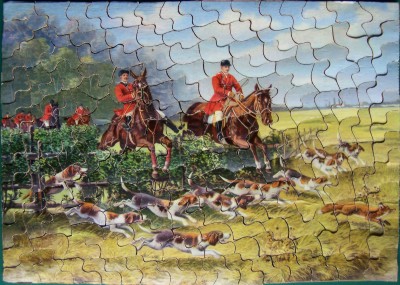 Standard K-Puzzles are made from plywood which is a very vulnerable
material(you will centainly remember the numerous repairs to broken
tongues). These veneer puzzles are even more troublesome and clearly
needed a different kind of approach. The standard shape included
enough curves to hold the puzzle together. A compromise to this was
made, also because the veneer wood was slightly warped. Against
better judgement, the sawing style was altered and puzzles were
sent to the shops. In those days it was not difficult to sell whatever
you wanted. The demand was far greater than the supply. From that point
of view the sellingprice of a a staggering 1,95 was not strange.
The puzzles that were directly sold a few years later to "Den Uyl"
in the Nassaulaan (a toy shop) took approximately the same price.
The problem of the breaking tongues were solved with a temporary
trade-off by sawing these messy puzzles. Without tongues. Your father
was a specialist in this kind of innovations.
Standard K-Puzzles are made from plywood which is a very vulnerable
material(you will centainly remember the numerous repairs to broken
tongues). These veneer puzzles are even more troublesome and clearly
needed a different kind of approach. The standard shape included
enough curves to hold the puzzle together. A compromise to this was
made, also because the veneer wood was slightly warped. Against
better judgement, the sawing style was altered and puzzles were
sent to the shops. In those days it was not difficult to sell whatever
you wanted. The demand was far greater than the supply. From that point
of view the sellingprice of a a staggering 1,95 was not strange.
The puzzles that were directly sold a few years later to "Den Uyl"
in the Nassaulaan (a toy shop) took approximately the same price.
The problem of the breaking tongues were solved with a temporary
trade-off by sawing these messy puzzles. Without tongues. Your father
was a specialist in this kind of innovations.
After a short while production of these veneer puzzles were stopped,
due to several reasons, but mainly because my father's quality-standard
was too high to go on in this way. Therefore, these veneer puzzles
have become extremely rare. After stopping with veneer softboard was tried
(hardboard was to expensive).
Small wonder therefore that this Bijenkorf puzzle was not immediately
recognized as a Klaus-Puzzle (then called “K-Puzzle”, although
this one was called “Bijenkorf Puzzle”). By the way, the
English word Puzzle was used, not the Dutch equivalent "Puzzel",
since the first idea in 1932 came from an English magazine called
“Hobbies“, and my father obviously had a subscription to this.
This magazine was published by the makers of our first sawing machines,
at that time still operated by foot. Later on, my father bought
quite a few of those machines.
By the way, how nice it must be to have a puzzle-expert in your
back-pocket. And none less than the chairman of the Dutch Puzzle-Guild!
Looks like an interesting man, I would like to meet one day.
|
